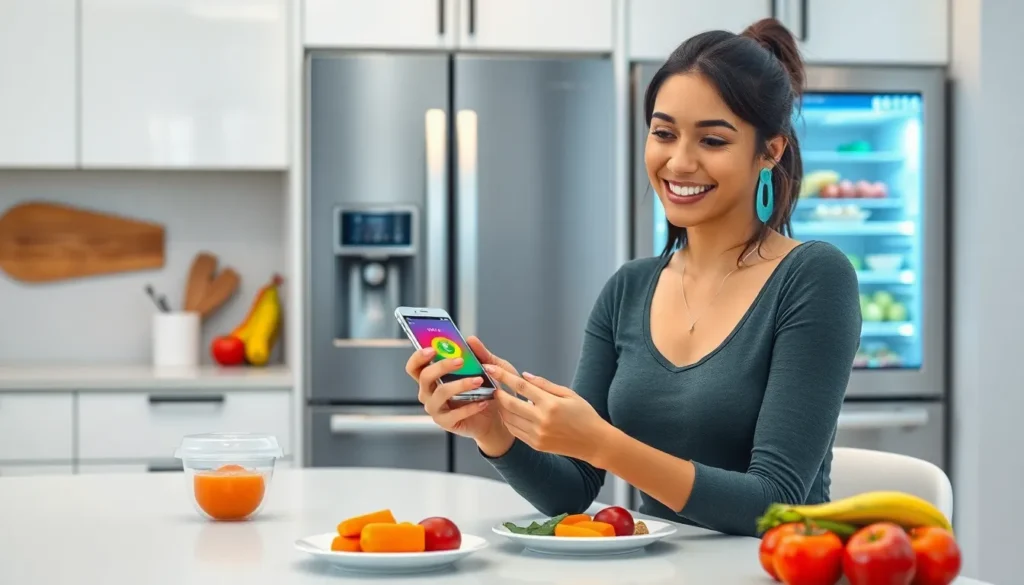Table of Contents
ToggleIn today’s fast-paced world, technology isn’t just a luxury; it’s a necessity. From the moment the alarm clock buzzes to the time the last Netflix episode wraps up, gadgets and apps weave seamlessly into daily routines. It’s hard to imagine surviving a morning without a smartphone to check the weather or a smart coffee maker brewing that much-needed caffeine fix.
But let’s face it: while technology can be a lifesaver, it sometimes feels like it has a mind of its own. Ever tried explaining to your smart speaker why it should play your favorite song instead of a cat video? Yet, despite these quirks, technology enhances life in ways we often take for granted. So buckle up as we explore how these digital wonders shape everyday experiences, making life a little easier—and a lot more entertaining.
Technology in Everyday Life: An Overview
Technology is deeply woven into daily life, reflecting its necessity for functionality and convenience. Gadgets enhance basic routines, allowing individuals to transition seamlessly from one task to another. Smart home devices, such as thermostats and lights, automate routines, improving energy efficiency.
Apps serve crucial roles, whether for tracking health, managing finances, or connecting socially. Communication tools enable instant contact, bridging distances and strengthening relationships. Virtual meetings facilitate collaboration, making remote work more effective than ever.
Shopping experiences transformed with technology streamline transactions through e-commerce platforms. Mobile payment options offer quick and secure methods for purchases, reducing the need for cash or cards. Even entertainment shifted, with streaming services providing diverse content directly to devices, allowing for on-demand viewing.
Transportation benefits from technological advancements as well. Ride-sharing apps make commuting straightforward, while GPS navigation aids in finding efficient routes. Electric vehicles and advancements in public transit aim to reduce environmental impact and improve convenience.
Health monitoring through wearables is becoming the norm, allowing users to track fitness goals and vital signs. This data drives better health decisions, with many devices syncing with mobile applications to share results.
Education also experiences significant changes, with online learning platforms delivering courses to learners across the globe. Access to information is virtually limitless, driving curiosity and self-improvement.
Technology consistently enhances everyday life, simplifying tasks and enriching experiences while encouraging ongoing adaptation and innovation. Each advancement pushes the boundaries of simplicity, comfort, and connectivity.
The Impact of Technology on Communication

Technology profoundly influences communication methods in everyday life. Instant access to information and global connectivity redefine how people interact.
Social Media Platforms
Social media platforms transform interpersonal communication. Users connect, share, and engage across various demographics and cultures. Facebook, Twitter, and Instagram allow users to disseminate information rapidly. Businesses leverage these platforms for marketing, targeting specific audiences effectively. Engaging content fosters community building, enabling brands to establish personal connections. Real-time feedback enhances engagement, as users react and comment on posts instantly. Platforms also serve as news sources, but they necessitate careful verification to avoid misinformation. Overall, social media’s reach shapes public discourse and influences opinions worldwide.
Instant Messaging Apps
Instant messaging apps streamline communication, fostering immediacy in interactions. WhatsApp, Telegram, and Signal facilitate text, voice, and video exchanges effortlessly. Users appreciate features like group chats and file sharing, enhancing collaboration. These apps enable secure communication through encryption, addressing privacy concerns. Notifications alert users promptly, ensuring timely responses. The convenience of mobile access allows communication anytime, anywhere. Organizations utilize messaging apps to enhance team collaboration, making remote work more efficient. Instant messaging’s versatility significantly impacts both personal and professional communication dynamics.
Technology in Healthcare
Technology plays a vital role in transforming healthcare services, enhancing accessibility, convenience, and efficiency. Its advancements improve the quality of care and patient experience.
Telemedicine Advancements
Telemedicine revolutionizes healthcare delivery by allowing patients to consult with healthcare professionals remotely. Video conferencing applications enable real-time conversations, significantly reducing the need for in-person visits. Data shows that telehealth services increased by 154% in March 2020 compared to the previous year. This shift not only saves time but also minimizes infection risks, especially during health crises. Remote monitoring tools track patient symptoms and vital signs, ensuring timely interventions. Overall, telemedicine fosters greater accessibility for patients in rural or underserved areas, transforming how individuals seek medical assistance.
Wearable Health Devices
Wearable health devices empower individuals to take charge of their health through constant monitoring. Fitness trackers can measure heart rates, track sleep patterns, and record daily physical activity. The global market for wearables is expected to reach approximately $60 billion by 2023. Smartwatches often include features like ECG monitoring and blood oxygen saturation detection, enabling early identification of potential health issues. Patients benefit from this proactive approach, as data collection aids in making informed health decisions. These devices encourage healthier lifestyles and enhance patient engagement in their health management.
Smart Homes and Automation
Smart technology transforms homes into efficient spaces. Automation enhances daily tasks, making them simpler and more convenient.
Smart Appliances
Smart appliances streamline household chores. Refrigerators can monitor food inventory and suggest recipes based on available ingredients. Washing machines offer remote control features that allow users to start cycles from their smartphones. Ovens can adjust cooking times and temperatures based on meal types, ensuring perfectly cooked dishes. The integration of these devices into home networks optimizes energy usage and provides cost-saving opportunities. According to a recent study, homes equipped with smart appliances can reduce energy consumption by up to 30 percent, highlighting their efficiency and long-term financial benefits.
Home Security Systems
Home security systems ensure peace of mind for homeowners. Camera systems provide real-time surveillance, allowing users to monitor their properties remotely. Smart locks offer keyless entry and allow users to grant access to guests with digital codes. Additionally, motion sensors alert owners of unusual activity, enhancing overall safety. Research indicates that neighborhoods with advanced security systems experience a 25 percent decline in burglary rates, emphasizing their effectiveness. The convenience of integrating security systems with mobile apps further empowers homeowners to oversee their safety effortlessly at any time.
Education and Technology
Technology reshapes education by providing innovative learning options. E-learning platforms offer diverse courses that cater to various learning styles. Students access lectures on platforms like Coursera and Udemy, gaining knowledge from industry experts. Live discussions and interactive activities foster engagement and enhance understanding. Flexibility plays a crucial role, allowing learners to study at their own pace.
E-Learning Platforms
E-learning platforms grant students opportunities to enhance their skills efficiently. Popular choices like Khan Academy and edX provide free and paid courses across numerous subjects. These platforms often include quizzes and assignments which reinforce learning. Certifications from these courses bolster resumes, making students more competitive in the job market. Data shows that online learning can improve retention rates, making it an effective alternative to traditional methods.
Online Resources for Students
Online resources serve as invaluable tools for students seeking additional help. Websites like Quizlet and Google Scholar offer studying aids and access to scholarly articles. These platforms allow students to create study sets and engage in collaborative learning. Access to forums and discussion boards encourages peer interaction and support. Research indicates that utilizing varied resources enhances academic performance, ultimately benefiting students in their learning journey.
Technology’s influence on everyday life is undeniable. It streamlines tasks and enhances experiences in ways that were once unimaginable. From smart homes to telemedicine, technology not only simplifies daily routines but also empowers individuals to make informed decisions.
As society continues to embrace these advancements, the potential for innovation remains vast. The integration of technology into various aspects of life fosters a more connected and efficient world. Adapting to these changes is essential for maximizing the benefits that technology offers.
In this ever-evolving landscape, staying informed and engaged with new tools and platforms will shape a brighter future for everyone.




